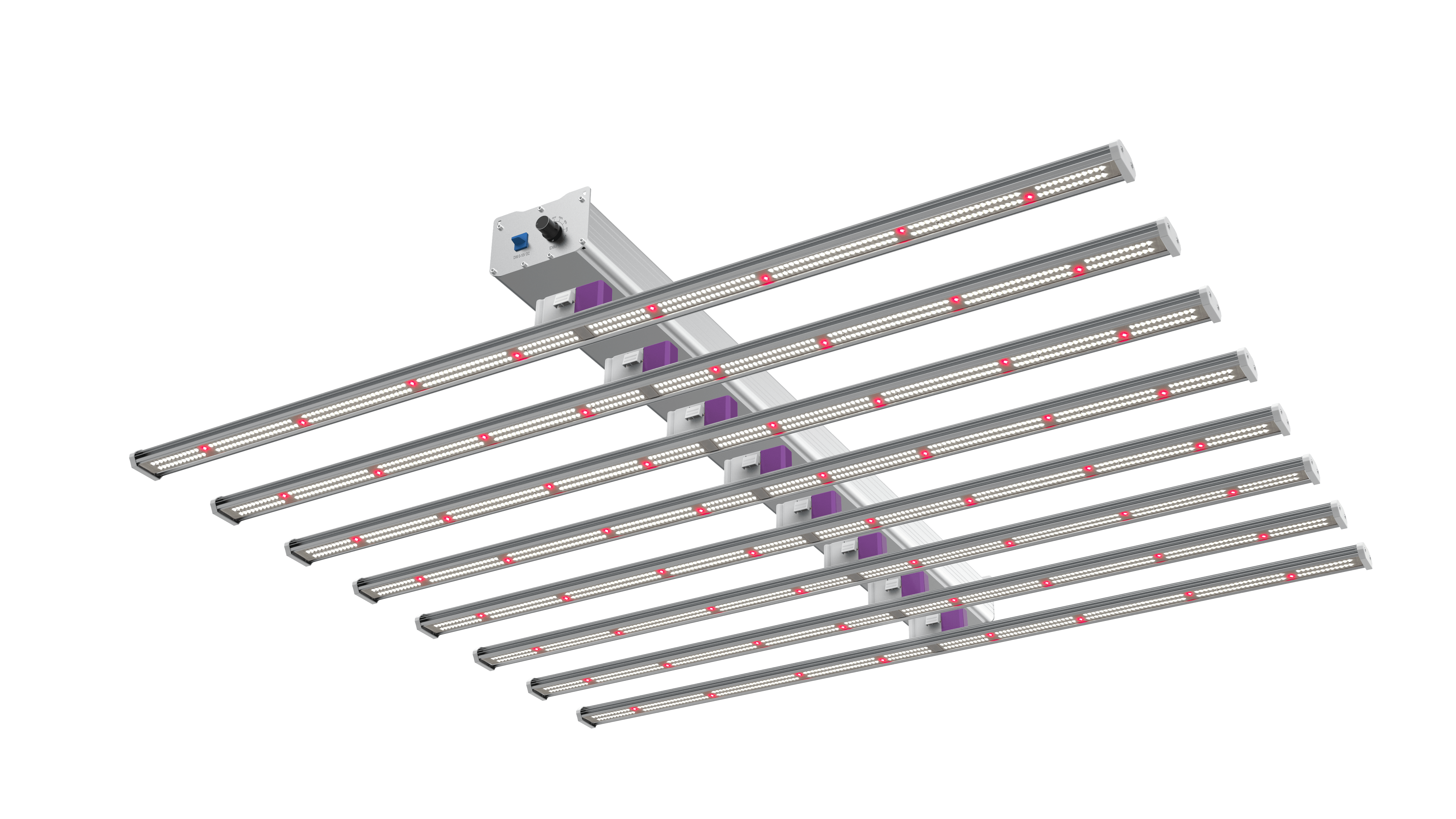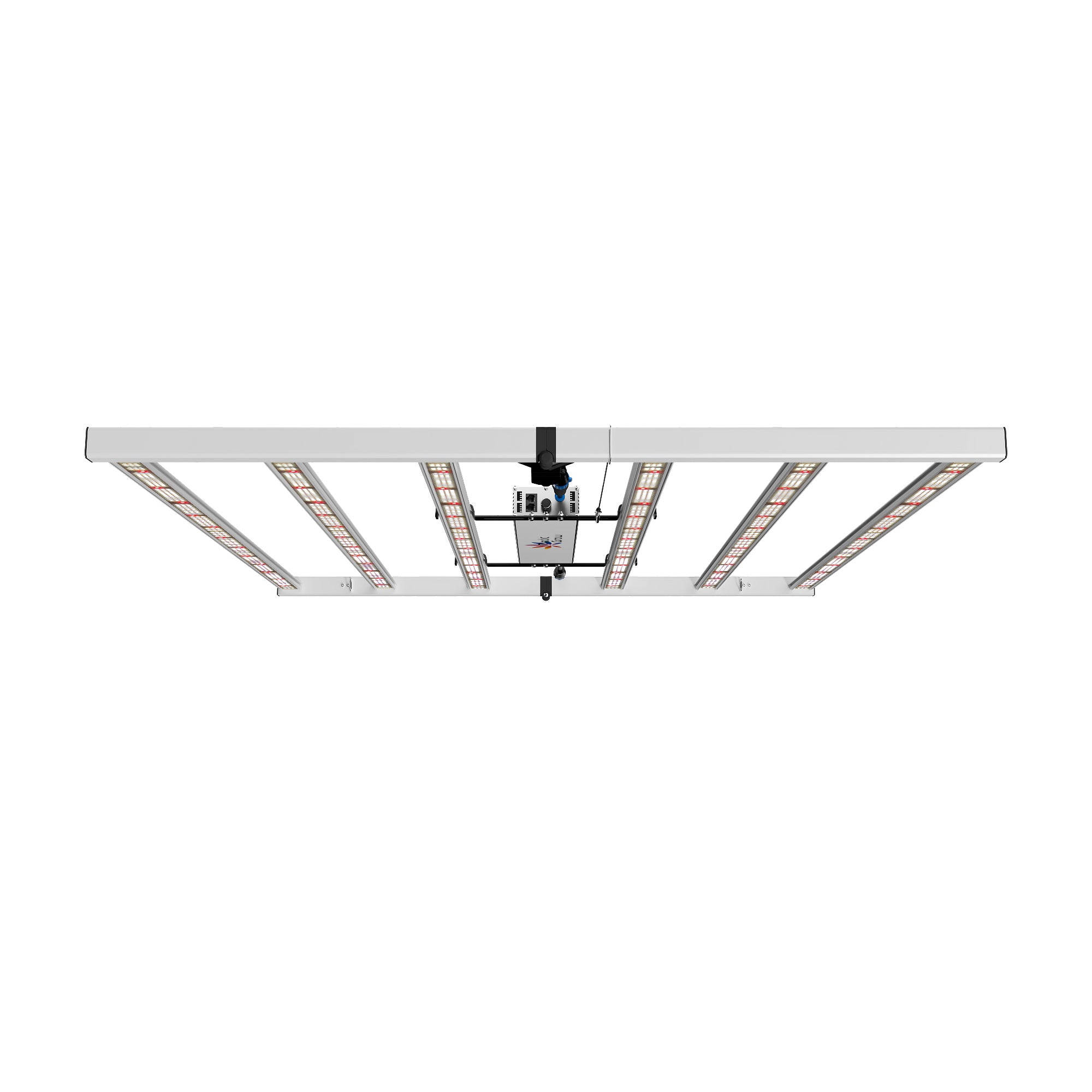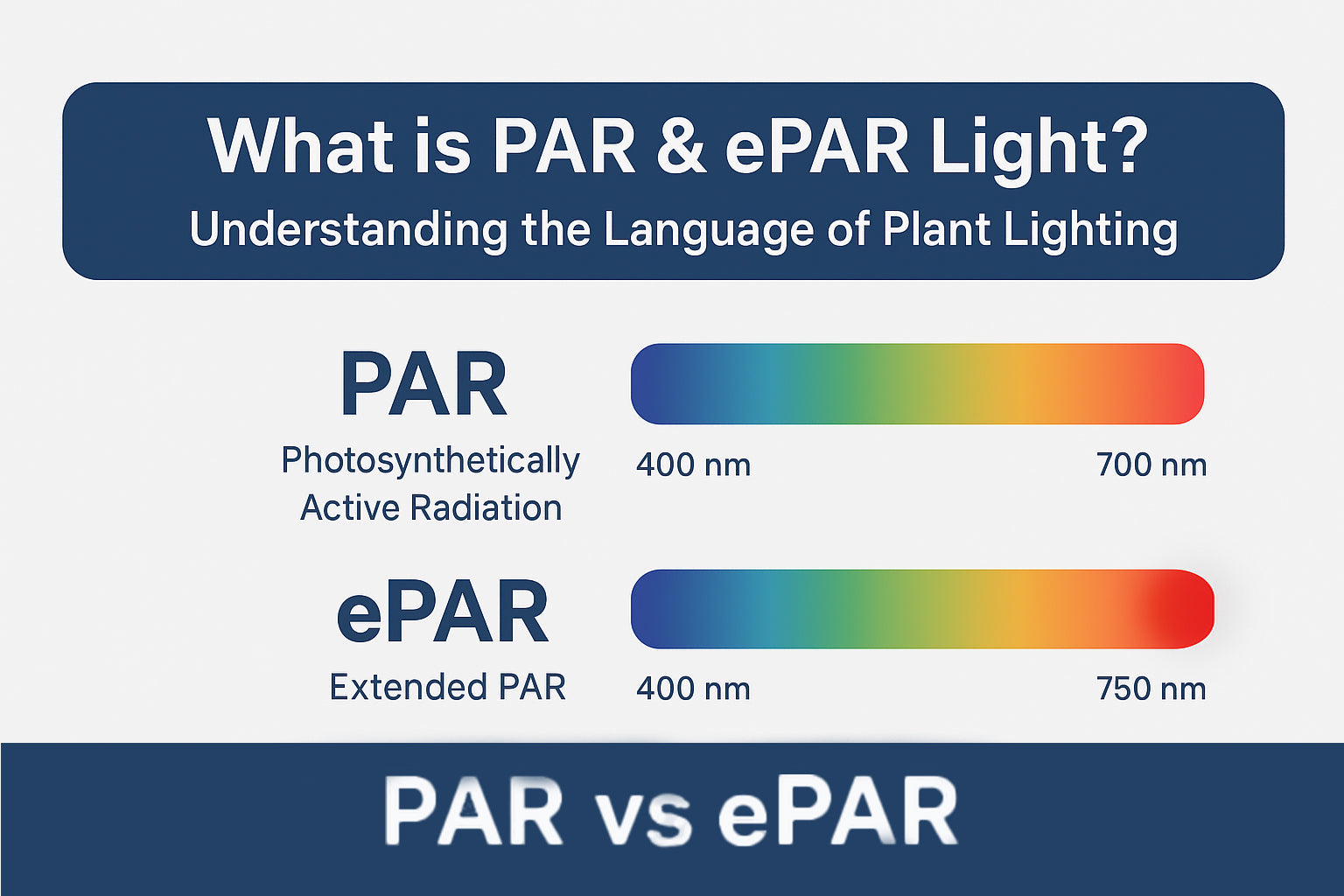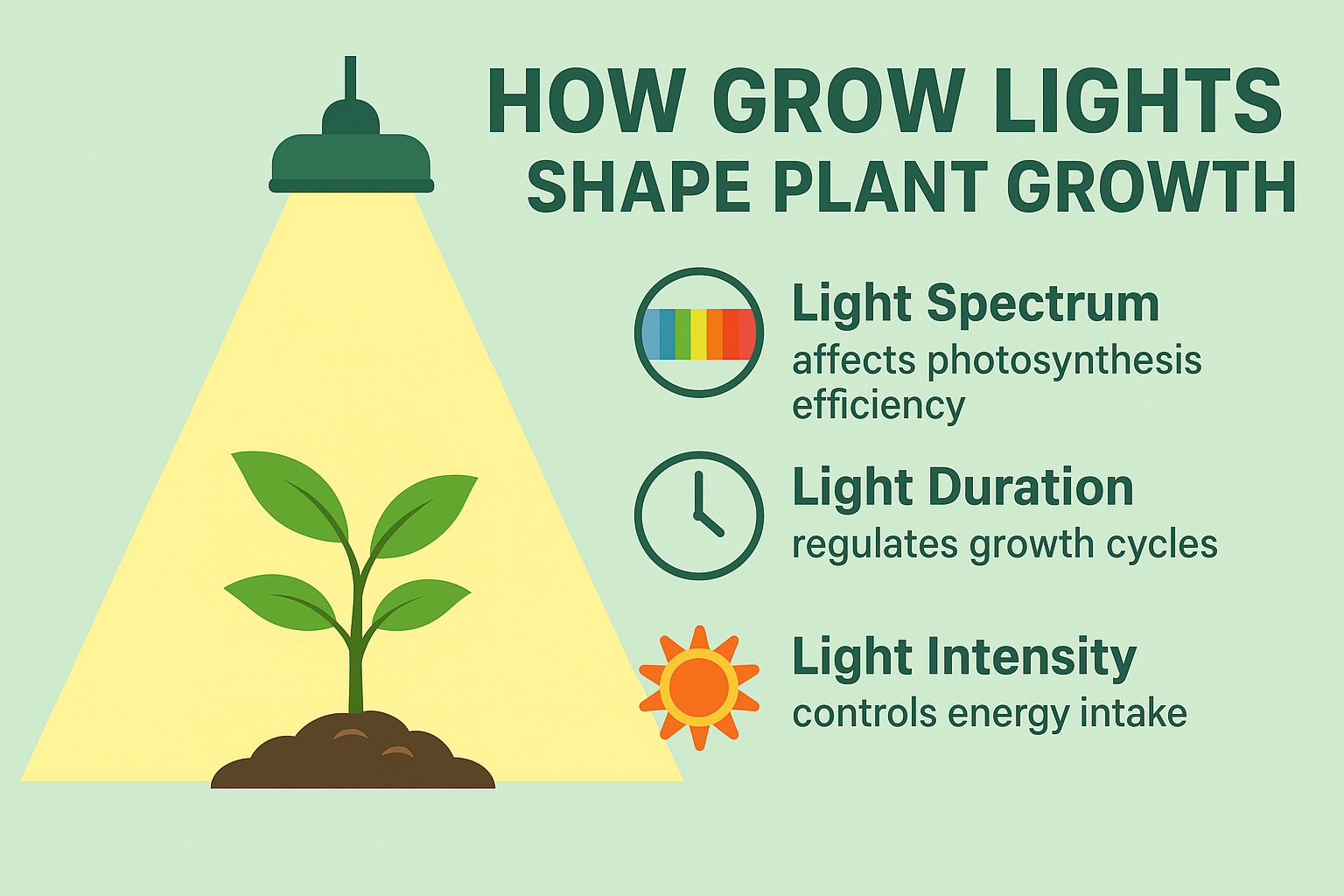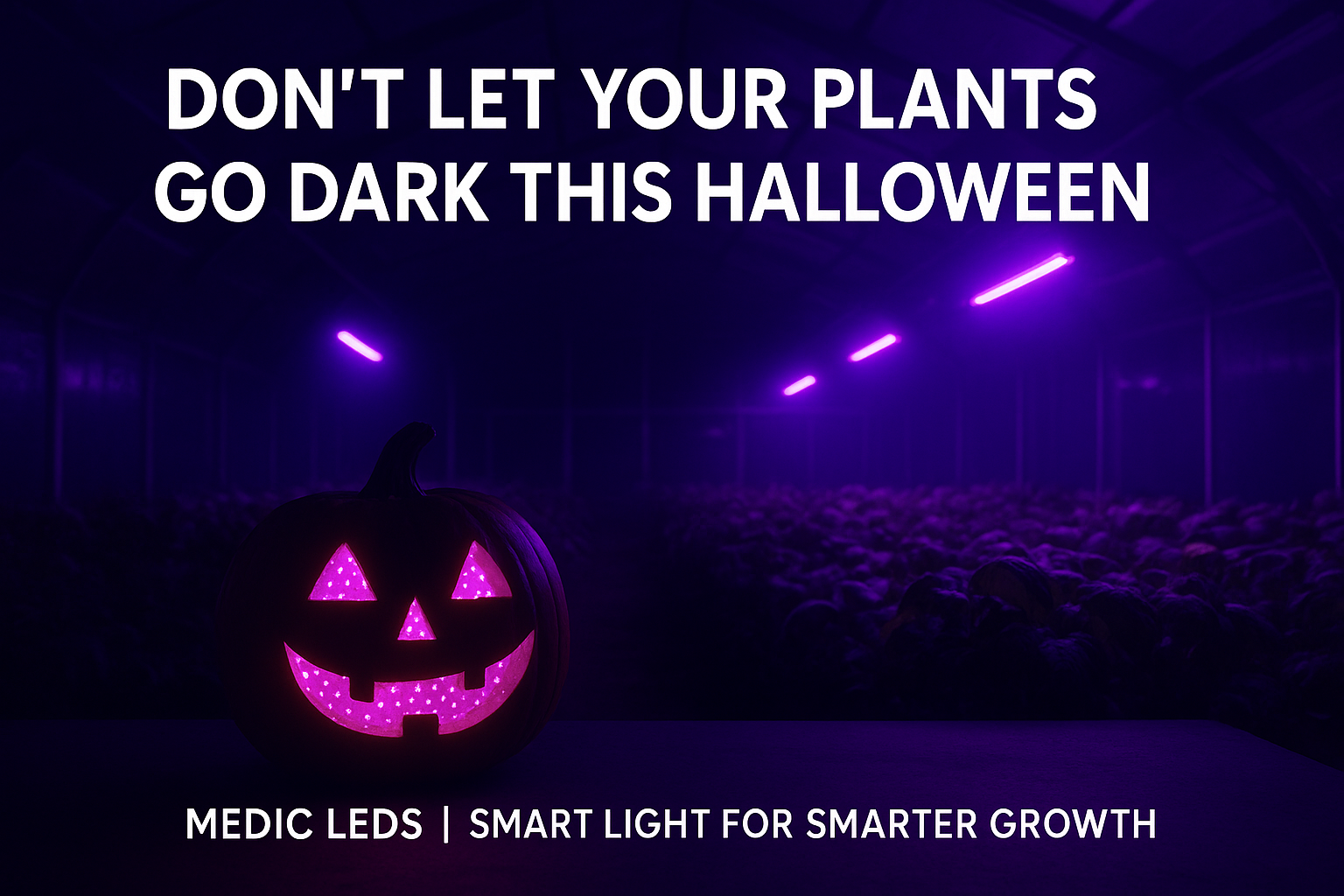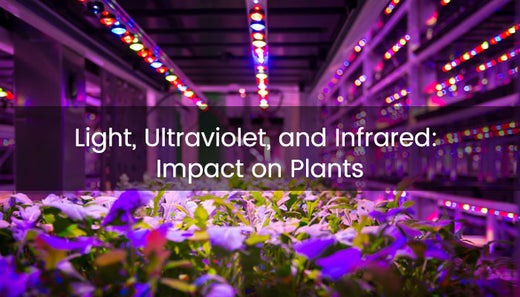
Light, Ultraviolet, and Infrared: Impact on Plants
It is no longer news that adequate lighting is one of your trump cards for successfully growing plants. The benefits of using the appropriate lighting system are endless and are worthy of note.
It is also necessary for growers to understand how different lighting impacts plants, e.g., Infrared and ultraviolet light for weed. This article seeks to go into great detail about grow lights and provide growers with adequate information that is easy to understand and apply.
- Part 1: Basic knowledge of UV + IR Light
- Part 2: Does IR & UV Light Work for Growing Plants?
- Part 3: Does UV/IR Harm?
- Part 4: Do plants need UV and IR?
- Part 5: Conclusion
- Part 6: Frequently Ask Questions
Basic knowledge of UV + IR Light

<Image Source:iStock/Sergio Lacueva>
There is a lot of science that goes into the explanation of how plants respond to different light spectrums and how these lights affect plants too. However, let’s look at a few details concerning the science.
Electromagnetic Radiation Spectrum
In simple terms, the electromagnetic spectrum is a range of all electromagnetic radiation. It describes a range of photon energies, wavelengths, and frequencies that cover between 1 to 1025 Hz. The spectrum consists of a range of electromagnetic radiation with subranges known as portions. These portions can then be classified as visible, infrared, and ultraviolet radiation.
The contributors to this spectrum include cosmic rays, gamma rays, X-rays, Ultraviolet radiation, Visible light, Infrared radiation, Microwaves, and Radio waves (in decreasing frequency and increasing order of wavelength). Here are a few uses of electromagnetic waves in daily life:

Visible light: It is so named because it is visible to our eyes. For example, Stars and light bulbs emit visible light.
Ultraviolet: The main source of UV radiation is the sun. There are several adverse effects of UV light exposure, e.g., burns and tanning.
Gamma-ray: It has a broad application in the field of medicine. Gamma-ray is used in imaging and to diagnose certain conditions.
X-ray: There are many instances where X-rays can be used. For instance, doctors can order an x-ray to evaluate the teeth and bone for any pathologies. These rays are also used by airport security officers to check through passengers’ luggage.
Infra-red: It is used for night vision goggles. These devices can capture the infrared light emitted by the human skin and objects that emit heat.
Microwave: This is the wave used in the microwave for cooking at the office or home.
Radio Waves: They are broadly used for TV and mobile transmissions.
Effect on Animals and Humans

<Image Source:iStock/Dejan Marjanovic>
Now that we know the different applications of electromagnetic waveforms, let's look at how they affect animals and humans. Zooming in on the two radiations (infrared and ultraviolet), you will discover that they have a great propensity to cause more harm than good in the setting of overexposure. Today, in terms of indoor UV light, ultraviolet radiation can also be emitted indoors. So, we need to understand how much is too much, and how this can affect you.
First, infrared can be used as therapeutic radiation, as it can be used as a potential cure for cancer, healing of muscular injuries, detoxification, management of inflammation and pain, and improvement of cardiovascular health. However, the risks associated with this therapy include heat or thermal injuries and complications for pregnant patients and those with terminal diseases.
Next, ultraviolet rays are emitted directly from sunlight, and the biological effect depends on the intensity emitted. Based on intensity, ultraviolet radiation has three types: UVA, UVB, and UVC. Of the three, UVC has the least damaging effect since it dissipates into the atmosphere.
However, UVA and UVB both have serious effects on soft tissues like the eyes and the skin. Exposure to UV radiation causes about 90% of skin aging. There could also be other eye damage and affectation like photokeratitis, macular degeneration, cataracts, and corneal damage. This is true for both humans and animals.
Does IR & UV Light Work for Growing Plants?
When plants are naturally grown, they receive a complete light spectrum that contains radiations like visible light, infrared and ultraviolet light. Like humans, plants also need the right conditions and nutrients to flourish. Can we say the same for plants? Does it only apply to plants in general terms?
Impact of infrared light on plants
Infrared light is found at the bottom of the EM spectrum. At this point, several lights have different wavelengths and energy. However, infrared has a longer wavelength with little energy. Some of the wavelengths may not be visibly seen but give off heat.
When red and blue light are combined with far-red or infrared rays, the process of photosynthesis is quickened by the Emerson effect. This eventually makes plants proliferate, as phytochrome readily senses these wavelengths. Contact with this radiation helps to convert pants from a vegetative to a flowering state.
The impact of ultraviolet light
As stated earlier, ultraviolet light comprises three types of light, UVA, UVB, And UVC, which have wavelengths of 100-280nm, 280-315nm, and 315-400nm respectively. The essential types for plants are UVA and UVB, as they readily pass the ozone layer, while UVC gets dissipated and absorbed by the layer.
Peculiar Benefits of UV Lighting to Plants

Currently, there are ground rules and requirements to meet before you get a license to use plant grow lights or supplemental UV grow lights to grow plants indoors. Some of these requirements include
- An assurance that pest control will be observed.
- The growers can utilize UV light plants indoors to create the same 'wild' environment for the plants to thrive.
Plants will always respond to their immediate environment. So, these conditions must be met beforehand. UV light from professional LED grow lights, such as Medicgrow Spectrum Y, can emit chemicals that shield plants from pests. These protecting compounds make plants less appealing to pests. Growers can use UV light for indoor plants to trick plants into becoming fragrant.
Growers can also do the following:
- Enhance the content
People get tanned to protect themselves in the face of sunlight (which is high in infrared and ultraviolet light). However, plants also use a similar mechanism.
- Sunscreen
First, they create their sunscreen. Plants develops chromosomes that help to protect plants from sunlight.
- Speed up the plant growth process by using an indoor grow tent kit.
- Ultraviolet radiation also helps to speed up plants' growth process, as the seed begins germination within the soil.
- Growers can achieve this by moving plants and seedlings to locations with more light intensities.
- Exposing plants to UV light at the early developmental stages reduces the shock time while quickening the growth process.
Infrared light also has its benefits for plants.
First, in smaller amounts, infrared lights are harmless to plants and their life cycle. Most times, when plants is grown in an area, what destroys the plant is excess exposure to the ever-available infrared light. Plants do better in adequate amounts of infrared exposure. Aside from growth, there are several other benefits conferred by infrared lights to plants. They include:
- Better protection against pests and bacteria
- An increase in resin quantity and quality
For more details on the benefits of UV rays on plants, you can read this article: Are Grow Lights Harmful to Humans?
Does UV/IR Harm?
We recently saw these two radiations from different perspectives, and we can only infer that there are positives and negatives in terms of plants growth. For instance, infrared lights generate high levels of heat energy which, if not properly controlled, could lead to thermal damage to plants. Also, skin cancers occur due to exposure to ultraviolet radiation in humans and animals.
The conversation tilts more towards the side of excessive exposure rather than on the nature of the wave itself. This is why a good LED grow light, like Medicgrow 1000-watt grow light, must have the capacity to dispense this radiation (infrared and ultraviolet) in adequate amounts.
Do plants need UV and IR?
Plants need all-round exposure to the full light spectrum to thrive; Infrared and Ultraviolet lights are part of that spectrum. They are vital at delicate phases of plant growth, e.g., the transition from the vegetative to the flowering stage. So, it is undeniable that plants require UV/IR radiation exposure.
Plants are generally non-mobile but receive and evaluate environmental signals from soil content and moisture, light spectrum, and temperature. For plants to know that there is a clear sky, they receive signals from short wave irradiation, e.g., UVA and blue light. A clear sky means a "no-competition environment" for plants.
Therefore, there is no pressure for plants to begin reproduction (produce seeds) or stretch out toward the light. This means that when plants are grown under rich UVA and blue spectrum, they tend to have thick leaves, small leaf areas, and short internodes.
These responses can be reversed by the use of far-red or green light, which induces a syndrome known as shade-avoidance syndrome. A classical manifestation of this syndrome includes enhanced flowering, while others are stretching of the stem and increased leaf area.
So, it is possible to improve the biomass and size accumulation when we adjust the amount of UVA and blue lights. This factor should be considered when administering UV lights for indoor plants.
Conclusion
Focusing on the arms caused by infrared and ultraviolet lights can discourage growers from its use. However, remember that plants need all the rays in the spectrum to thrive. So, there must be a way to provide these radiations in appropriate amounts. This is why purchasing a professional LED light is essential, as it promises to help growers adjust the ultraviolet and infrared radiation.
Related Posts:
Best Grow Lights for Marijuana 2024
How Much Can One Plant of Weed Make?
Frequently Ask Questions
1. Why is UV light crucial for plant growth?
UV-B increases photosynthetic activity in many plant species. There is a guarantee for increased flavonoid production in the leaves of old and young plants. Also, UV-A radiation equally has a positive effect on plants’ photosynthetic activity when there is exposure to UV-B.
2. Which light favors plant growth the most?
To regulate development, red light is the best for the job. Red light has a waveband of 400 – 700nm within which it is photosynthetically active.
3. What does IR do for plants?
Infrared lights give off the heat effect, which helps to provide the needed temperature for plants to develop. There is a greater chance of fruit ripening under IR radiation; also, increasing the light tends to affect the speed of the plant stem growth. However, short exposure to infrared widens the space between nodes.
4. Do plants require UV and IR light?
Yes, they do. Plants generally need wavelengths above and below the visible light spectrum; that includes UV and Infrared lights.
Featured Products
Blog Posts
Contact Us with Any Idea!
- Choosing a selection results in a full page refresh.
!

















